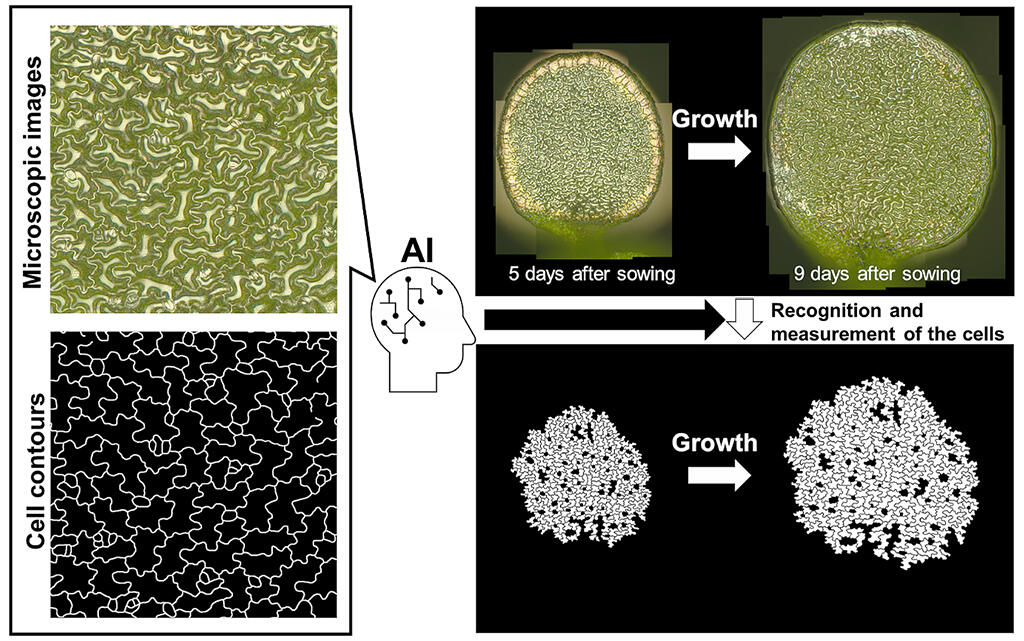The research group consisting of Kotomi Kikukawa, a graduate student of the Kumamoto University Graduate School of Science and Technology and Associate Professor Takumi Higaki, Kumamoto University International Research Organization for Advanced Science and Technology, in collaboration with Associate Professor Akira Watanabe of the Tohoku University Institute of Multidisciplinary Research for Advanced Materials, has succeeded in developing a new technology for tracking and measuring changes in the shape of epidermal cells that make up the surface of leaves at a low cost and with high accuracy.
It is known that as they grow, many epidermal cells (the pavement cells) of the leaves of dicotyledonous plants transform from a simple brick shape to a complex jigsaw puzzle shape. This characteristic change to a jigsaw puzzle type cell shape is attracting attention not only in the field of basic biology but also in the field of applied research, such as in the design of artificial structures. In the study of cell shape changes, the technique of tracking cells over time and measuring the change in shape is a basic and important technique.
The research group has found through their research to date that by applying metal ink to the surface of leaves, the contours of cells can be clearly observed even with a relatively inexpensive metallographic microscope. In their study, the research group used silver ink in which silver nanoparticles were dissolved.
It was found that applying a high concentration of silver ink inhibits leaf growth; however, when applied at a certain concentration, cells can be observed with almost no effect on leaf growth. Furthermore, by utilizing AI, it has become possible to develop a system that recognizes and measures cell shapes with high accuracy from microscopy images. Regarding accuracy, it was found that this system can achieve a high accuracy comparable to that of existing analysis methods. The usefulness of the system was also demonstrated by analysis of plants lacking genes that play important roles in cell morphology.

Credit: Kumamoto University, https://doi.org/10.3389/fpls.2021.745980
According to Associate Professor Higaki, "In the study of cell shape changes, the technology of tracking cells over time and measuring changes in their shape is a basic and important technology. To measure cell shape, we have developed a new AI-based technology that applies metal ink to the surface of leaves and automatically recognizes images taken with a relatively inexpensive metallographic microscope. We expect that the spread of this technology will lead to the clarification of the mechanism of plant cell shaping and promotion of applied research that makes use of its characteristic shape."
■ Metal-Nano-Ink: A solution in which metal nanoparticles are dissolved. It is mainly used in the engineering field and not commonly used in the biological field. The study used silver ink in which silver nanoparticles were melted.
■ Metallographic Microscope: A microscope that uses reflected light from the objective lens side and detects and observes the the sample. It is cheaper than the confocal laser scanning microscope commonly used in the fluorescent labeling method.
This article has been translated by JST with permission from The Science News Ltd.(https://sci-news.co.jp/). Unauthorized reproduction of the article and photographs is prohibited.




